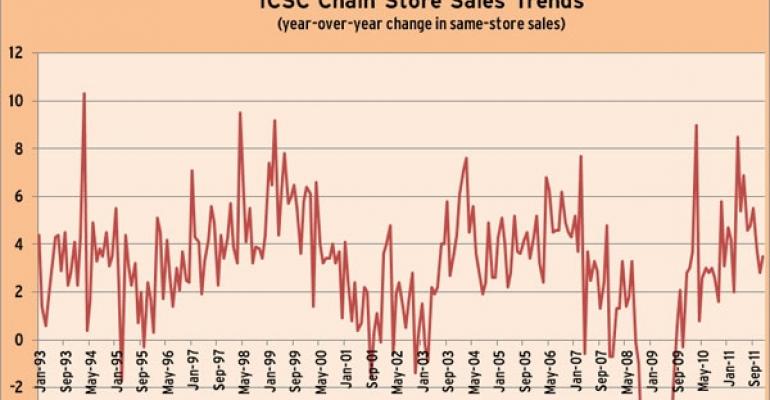The 2011 holiday shopping season turned out to be relatively strong for U.S. retailers, promising a stable year ahead.
Same-store sales for U.S. chains posted an increase of more than 3 percent during the November/December period, a performance comparable to 1994. At the same time, much of the shopping took place during periods of extreme promotions such as Black Friday and the retailers that posted the strongest gains were also the ones offering the most aggressive discounts, signaling consumers’ continued insistence on getting value for their money.
Going forward, this trend might eat away at retailers’ margins.
“Given the backdrop—that retailers are operating with 8.6 percent unemployment and a stagnant housing market—it turned out to be a successful holiday season,” says Ken Perkins, president of Retail Metrics Inc., an independent research firm tracking the retail industry. “But it was also more event-driven than in the past, with the bulk of shopping taking place during Black Friday and Super Saturday, and there was a significantly higher level of promotions and discounts.”
Hard numbers
ICSC estimates that U.S. chain store sales rose 3.5 percent this December, an improvement of 40 basis points over the increase posted last year. For the combined November/December period, ICSC reported a same-store sales increase of 3.3 percent. The figure is slightly lower than the 3.8 percent gain posted for November/December 2010, but still constitutes one of the best holiday shopping seasons in the past five years.

ICSC based its estimate on a survey of 25 retail chains. Its numbers don’t include the U.S. biggest retailer, Wal-Mart Stores Inc.
The Retail Metrics Same-Store Sales Index also beat expectations in December, posting a gain of 3.6 percent. For November and December combined, same-store sales rose 3.4 percent in 2011—lower than the 4 percent gain retailers achieved last year, but still a respectable figure.
Similarly, Kantar Retail, a Columbus, Ohio-based consulting firm, calculated a 3.6 percent increase in same-store sales in December, on top of a 3.1 percent increase in November.
What’s more, industry analysts including Craig Johnson, president of Customer Growth Partners, a New Canaan, Conn.-based consulting firm, feel the level of spending retailers saw in the past two months is more sustainable than in years past because shoppers have been spending money out of their current incomes, rather than relying on credit cards.
“Shoppers were feeling a little better through the end of the year than they were in August and September, when there was a lot of uncertainty,” notes Frank Badillo, senior economist with Kantar Retail. “So we are seeing some positive signs heading into 2012, but at the same time, there are still reasons to be cautious. The biggest question mark is what impact will things happening around the world have on the U.S. economy?”
In addition, Badillo expressed concern about how the lower level of inflation in 2012 might affect same-store sales. This year, higher prices on food and apparel helped drive sales higher, he notes. As inflationary pressures dissipate in the months ahead, retailers might face lower sales levels.
Winners and losers
Once again, the two segments of the retailing universe that performed the best during the holidays included luxury chains and discounters. As a group, luxury stores posted an 8 percent gain in same-store sales in December, by far the biggest increase in the retailing universe. Warehouse clubs posted an increase of 7 percent.
Discounters experienced an increase of 3.1 percent in December, but the gains were not evenly distributed. TJX, for instance, reported a gain of 8 percent, while Target’s same-store sales went up 1.6 percent.
There were also significant discrepancies in the apparel and department store sectors. The Gap ended December with a 4 percent drop in same-store sales. At the same time, Limited posted a gain of 7 percent and Ross Dress for Less a gain of 9 percent.
In the department store sector, Dillard’s and Macy’s posted increases of 4 percent and 6.2 percent respectively. On the other hand, J.C. Penney reported a gain of just 0.3 percent.
In certain cases, such as that of Kohl’s, which posted a same-store sales decrease of 0.1 percent, the poor performance might be attributed to unseasonably warm weather and not-aggressive-enough discounting.
In general, however,” the same people who were lagging earlier in the year: Sears, Talbots, J.C. Penney, lagged during the holidays,” according to Johnson.

